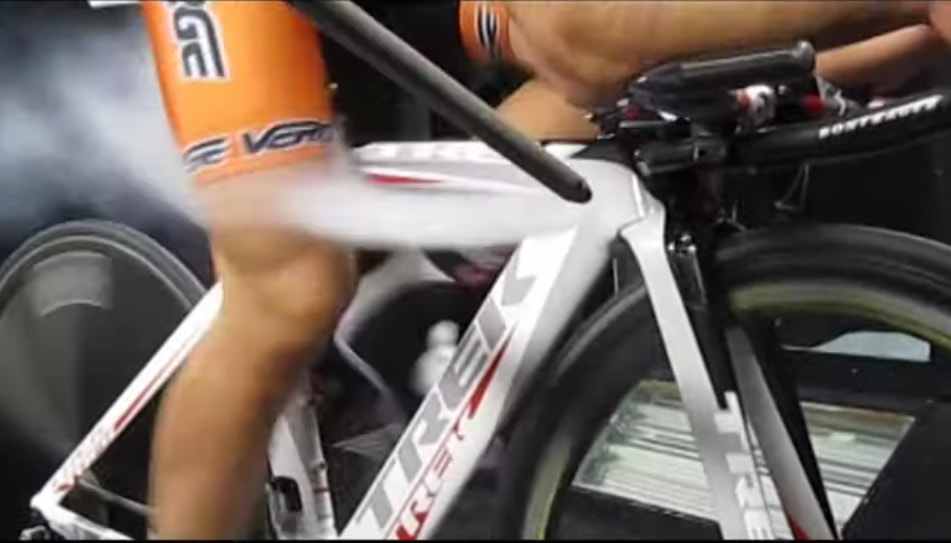|
SEARCH My Blog (Opens in new tab)
Microdroplets carry coronavirus for 3 hours after a conversation
The need to keep our social distance during the coronavirus epidemic has generally been working well. However, we may be underestimating the range of community spread via aerosol transmission.
Research in Japan shows that aerosol transmission is still potent for up to 30 minutes. This finding is important for all of us in managing our risks. For specific groups like cyclists, it is important enough to be concerning. Proof of long-lasting microdroplets
Coronavirus spreads as an airborne aerosol. Aerosol refers to the mixing of the virus with droplets in the air - similar to fog. Infection occurs after inhalation or when the aerosol settles on a surface which is touched.
It had been thought that these droplets tend to fall from the air after travelling about a metre. This understanding may be the origin of the 1.5m rule for social distancing.
While it was known that the virus could remain present in a closed room for up to 3 hours, the mechanism supporting this viability was not known. However, the Japanese researchers discovered the existence of microdroplets These microdroplets do not fall to the ground for a long time.
The microdroplets "float" on the air moving in a room. The researchers confirmed that they remain floating for up to 3 hours. Confirms "conversation spread" not just coughs
This video demonstrates their research, and it visually demonstrates the microdroplets. The video also shows how someone talking loudly can launch a storm of microdroplets which transgress the 1.5m social distancing safety zone.
The discovery of microdroplets, and the effect of loud conversation in spreading them, confirms the belief of some experts that coronavirus is being more readily spread by conversation than previously thought. Masks less effective against long-term microdroplets
What is not generally appreciated - at least I have not seen it mentioned elsewhere - is that protective equipment is not effective against long-term floating aerosols, i.e. the microdroplets.
In 2014 researchers set out to examine the effectiveness of face shields against aerosols - to understand how health care workers were best protected. They found that wearing a face shield reduced the inhalational exposure of the worker by 96% in the period immediately after a cough. However, "in the period from 1 to 30 minutes after a cough, during which the aerosol had dispersed throughout the room and larger particles had settled, the face shield reduced aerosol inhalation by only 23%". They concluded: "Face shields can substantially reduce the short-term exposure of health care workers to large infectious aerosol particles, but smaller particles can remain airborne longer and flow around the face shield more easily to be inhaled." Regarding face masks, which are what is commonly available, the available research shows that face masks are less effective than face shields. … there is little evidence that wearing a surgical mask provides sufficient protection from all the hazards likely to be encountered in an acute health care setting: the use of a respirator and face shield should be considered depending on the circumstances. What this means for you and me:
Cyclists blasting each other with microdroplets
When I saw the video I also thought immediately about the groups of cyclists I still see on the road here in Melbourne (Sandringham - Bay Road) every morning.
Most riders keep a “social distance”. But there is a hard-core who show no respect for each other, their families and the community by still riding together — mostly middle-aged males. The vortices swirl the microdroplets over the following rider
The presence of microdroplets demonstrates the danger to all in cyclists in groups and even those following "safely" at 1m to 2m behind others.
The "drafting" effect in cycling is well known and widely practised. A rider sitting in the right position behind a lead rider can save around 30% of their energy. The physics of how this happens also explains the dangers of microdroplets. Drafting reduces the effect of any headwinds on the next rider, and it also "pulls" the next rider into a slight vacuum created by the lead rider. That slight vacuum is a swirling mass of air - vortices streaming off the lead rider. The video below shows how the air flowing past the lead rider swirls into the face of the following rider - as you can clearly see.
Coronavirus microdroplets from the lead rider (from all the lead riders if there is a chain of riders) are in those vortices.
You might think that the microdroplets would be blown away from the moving air and wind. That's not the case as this video shows. The vortices create a tiny vacuum which draws the air from the lead riders into the face of the following rider. In fact, for riders following another in a drafting position in everyday riding can smell the sweat of the rider in front, and sometimes even feel the heat coming from their body. That is the result of the airflow and vortices. The coronavirus microdroplets will arrive in the rear rider's face in the same way as the smell of the sweat.
What this means for you if you are a cyclist:
The groups of riders are endangering you, your family, their families, and the rest of the community. Ride well clear of them, and all other cyclists.
Good luck.
Follow me on Quora for more health and fitness tips. If you enjoyed this article >> Follow me Leave a comment >> Share it >> Stay healthy If you have any questions email me and I will get back to you.  RSS Feed RSS Feed
Latest: get your free customised fitness plan designed uniquely for you.
|
ChoicesSince I was diagnosed at 50 with Type 2 diabetes I've been learning how to do bone-building fitness training which lowers my age. You can too. It's your choice. Walter Categories
All
Archives
May 2023
|








